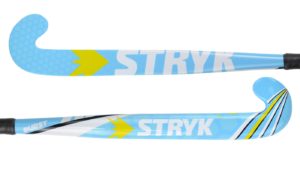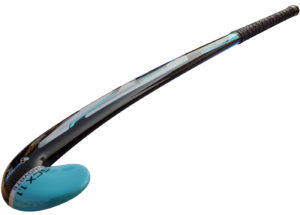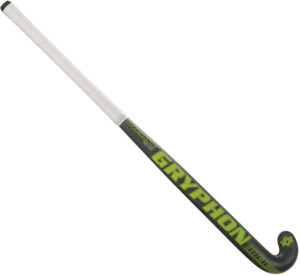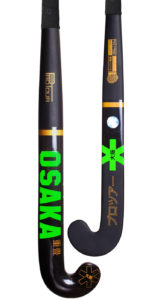Katie O’Donnell, 2012 field hockey Olympian, visited Sports Unlimited to talk about her incredible accomplishments, most memorable moments, and her long history with SU. She talks at length about the equipment she uses as center for the U.S. Women’s Field Hockey Team, and gives great advice to other athletes on choosing field hockey sticks, field hockey shoes, and even colleges for student athletes!
Between her rigorous training schedule, and packing her bags for London and a date with Olympic destiny, U.S. Women’s Field Hockey center Katie O’Donnell recently found some time to stop by Sports Unlimited for a day of interviews and reminiscing.
[youtube http://www.youtube.com/watch?v=-lCbQ9zKE5A?rel=0]
Before becoming an international field hockey sensation, joining the U.S. Women’s Team, beating first ranked Argentina in the 2011 Pan American Games, being named Sports Woman of the Year in 2010, and dominating the game at the University of Maryland (bringing home 2 NCAA championships in the process), Katie was just a little kid playing around the original Sports Unlimited store, and hanging at our Field Hockey Summer Camps.
[youtube http://www.youtube.com/watch?v=dTzcpAPdCd0?rel=0]
“I remember her running around the fields while games were going on, and that blond pony tail was bobbing up and down.” said Sports Unlimited CEO Don Ball. “We used to run camps for field hockey and lacrosse during the summer, and Katie’s mom was our camp nurse the one year. Katie was too young to participate, but we let her take part anyways, and she was a star waiting to happen then.”
With a great start in the game, and an endless drive to push herself and her skills further, Katie took the high school, college, and international field hockey worlds by storm. She shattered records at Wissahickon High School, and later at the University of Maryland, competing in tournaments around the world and leading the pack time and time again.
It was at the University of Maryland, after a tournament, that she received the news from her coaches that she’d be going to the 2012 London Olympics with the U.S. Womens Field Hockey Team.
[youtube http://www.youtube.com/watch?v=5WTJU76-LZw?rel=0]
Advice for Field Hockey Players
Talking with Sports Unlimited, Katie was happy to give out some personal advice to our wide audience of field hockey players.
When it comes to field hockey sticks, Katie prefers something a little longer, for extra reach, and high carbon content, for a strong hit. She plays with Princess field hockey sticks, but admits that in most cases, the most expensive stick is not necessarily “the best stick.”
[youtube http://www.youtube.com/watch?v=3HHyK8ANl_Q?rel=0]
Elite-level sticks are typically stiffer, with high carbon content, to give top players like Katie, more power in their hits. These sticks are incredible in the hands of a professional, but for developing players, or players with softer hands, expensive, top-level sticks can actually be a detriment to your game.
Katie also shared some insight into choosing field hockey shoes, explaining that your playing surface should determine which shoes to choose.
[youtube http://www.youtube.com/watch?v=ihJRzfUR_F8?rel=0]
Flats are typically better suited to indoor field hockey, while turf shoes or cleats should be used on grass or turf fields. Always preferred playing in Asics field hockey shoes, Katie and the rest of the U.S. Women’s Field Hockey Team are taking to the Olympic fields in Asics Lethal Shot Turf shoes.
To help develop field hockey skills, Katie suggests some great drills everyone can perform in their own backyard. She hones her stick handling skills by using a golf ball, and challenges herself to improve ball lifting and 3D skills by putting obstacles (including her dog) in the way.
[youtube http://www.youtube.com/watch?v=JwIumO4nCfY?rel=0]
Finally, Katie left us with some amazing advice to the next generation of field hockey stars. She’s been through it all, and believes kids should diversify their athletic life, to avoid single-sport burn out. At the end of the day, sports should be fun, and for her, it’s always been important to keep that in mind. Challenge yourself, push yourself, do it all, and take it all seriously, but at the end of the day, have fun doing what you do!
[youtube http://www.youtube.com/watch?v=hbLQS_X07FQ?rel=0]
From all of us here at Sports Unlimited, we want to thank Katie for coming back and taking the time to talk to us, tell some stories, dispense advice, and share her expertise with our staff and customers everywhere. Good luck in London Katie! We hope there’s a bit of gold around your neck the next time we see you!
|
| By Brandon Porter.
Brandon is a product specialist at Sports Unlimited. |

 Since defenders see a lot of stick-on-stick contact when tackling their opponent, they require a stick with a lot of durability. We recommend buying a stick that has a higher fiberglass content since carbon can be more brittle in a compound stress way. Including aramid in the composition can also help improve the strength and durability of the stick, and it dampens the vibrations felt in the handle of the stick for less sting in your hands. In addition, we recommend choosing a stick with a maxi toe as it provides the largest sweet spot, allowing you to make better contact with the ball when hitting or trapping it.
Since defenders see a lot of stick-on-stick contact when tackling their opponent, they require a stick with a lot of durability. We recommend buying a stick that has a higher fiberglass content since carbon can be more brittle in a compound stress way. Including aramid in the composition can also help improve the strength and durability of the stick, and it dampens the vibrations felt in the handle of the stick for less sting in your hands. In addition, we recommend choosing a stick with a maxi toe as it provides the largest sweet spot, allowing you to make better contact with the ball when hitting or trapping it. Since midfielders play with the defense and the offense, they need a lightweight stick that can keep up with the speed of their game and offer the necessary precision for ball handling and passing skills. A midi toe provides a well-balanced feel that’s great for all around stick skills, especially reverse stick work, and it provides a decent sized sweet spot for quickly trapping the ball and passing to your teammate. A standard or mid bow size (19 – 23mm) is recommended for midfielders because of its versatility, but any shape you are most comfortable with can be used.
Since midfielders play with the defense and the offense, they need a lightweight stick that can keep up with the speed of their game and offer the necessary precision for ball handling and passing skills. A midi toe provides a well-balanced feel that’s great for all around stick skills, especially reverse stick work, and it provides a decent sized sweet spot for quickly trapping the ball and passing to your teammate. A standard or mid bow size (19 – 23mm) is recommended for midfielders because of its versatility, but any shape you are most comfortable with can be used. A forward demands power from his or her stick. They must be able to generate extreme power when shooting and when passing to an open teammate across the field, which is why they need sticks with a high carbon content. The higher the carbon content the more powerful the stick will be and the harder it will be for your opponent to stop you. This added power will also improve your drag flicks and aerial skills to enhance your 3D game. The attacking position is defined by speed, accuracy, and precision, so their sticks should be too.
A forward demands power from his or her stick. They must be able to generate extreme power when shooting and when passing to an open teammate across the field, which is why they need sticks with a high carbon content. The higher the carbon content the more powerful the stick will be and the harder it will be for your opponent to stop you. This added power will also improve your drag flicks and aerial skills to enhance your 3D game. The attacking position is defined by speed, accuracy, and precision, so their sticks should be too.

